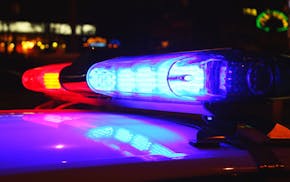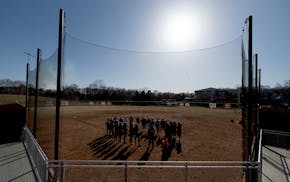In just over a month, motorcyclists in Minnesota will legally be able to ride in between traffic lanes in certain situations, but word about the change in state law has been slow to get out.
Last year, Gov. Tim Walz signed a bill allowing for what is called lane splitting and lane filtering, which is set to go into effect July 1, 2025. Provisions for the practices are contained in budget bills still being debated at the Legislature this spring. And until they pass, the Department of Public Safety has been holding back on widely disseminating news about the rules in the event definitions change, or in an extreme turn of events, the law is delayed from taking effect.
"We didn't want to put something out there if there is going to be a change," said DPS spokesman Mark Karstedt. "We want to ramp up right before it goes into effect."
It's not that there hasn't been any word about the new law out there. A few ads have played on Spotify channels and popped up on gas station video screens. DPS also has a website dedicated to the law.
Lane filtering allows motorcycles to protect themselves by moving between lanes of traffic when vehicles are stopped, such as at a traffic light or in a traffic jam. Riders can go up to 15 mph.
Lane splitting, also known as stripe riding, allows motorcyclists to travel between vehicles when traffic is moving at 25 mph or slower. Once traffic moves at 25 or faster, motorcyclists must return to riding in one traffic lane.
At no time are motorcyclists allowed to pass other traffic on either the right or left shoulder, according to the law.
The intent of the law is to protect motorcyclists from rear-end collisions and increase traffic flow on the roads, said Jay Bock, the state's motorcycle safety administrator.
"It keeps them from being at the back of the line" where motorcyclists may be most vulnerable, he said.
While five other states allow for lane filtering or lane splitting, Minnesota may be the first to allow for both filtering and splitting.
Bock said there isn't a lot of data showing the results of either practice. But the American Motorcyclist Association endorses the practices of lane splitting and lane filtering, pointing to research from the University of California Berkeley Transportation Research and Education Center that found the movements may not be as risky as they appear.
"This option can provide an escape route for motorcyclists who would otherwise be trapped or struck from behind," the association said.
The study found motorcyclists who lane split are less likely to get hit from behind than those who say in their assigned traffic lane.
So far, seven motorcyclists have died on Minnesota roads this year, according to the state's Office of Traffic Safety.
With July 1 just around the corner and just a $200,000 budget for education, Bock admitted that it would be nice to have more time and resources to promote the law and educate citizens on it.
"We don't know what the final version of the bill will look like, and it would be more confusing if the public got two different messages" Bock said."We have stuff in place to go."
For example, Karstadt DPS plans to include fliers with vehicle registration notices, which can reach as many as 350,000 people a month.
The law specifically states that vehicle drivers can not impede a motorcyclist's progress. Motorcyclists must also proceed in a "safe" manner, Bock said.
"This is new for all of us," Bock said. "It's going to be a learning curve for all of us. There is going to be a level of acceptance for all of us."

Golden Valley highway crash leaves one man dead; suspect in custody
Semi kills 10 cows on southeastern Minnesota highway
In South Carolina, Walz says Democrats 'need to change the attitude'
Two injured in shooting outside University of Minnesota arena after high school graduation

